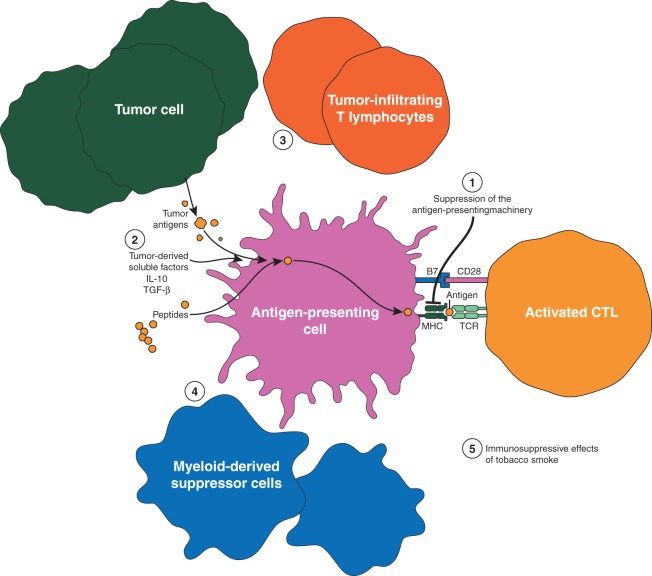Figure 2.
Mechanisms of humoral and cellular immune dysregulation in lung cancer. Tumor antigens are presented by antigen-presenting cells in the context of major histocompatibility complex class I or class II molecules are recognized by the T-cell receptors (TCR). Additional co-stimulatory signals are mediated through constitutively expressed co-stimulatory molecules on the T cell and the APC (e.g. B7-CD28) are also necessary for T-cell activation. The presence of both signals trigger intracellular events resulting in the activation and interleukin (IL)-2-dependent clonal proliferation of T cells. Some of the mechanisms employed by tumors to escape the host immune response and promote immune tolerance are represented: (1) Suppression of antigen-presenting machinery, (2) Soluble factors released by the tumor (examples include interleukin 10, and transforming growth factor-β), (3) Tumor-infiltrating T lymphocytes, (4) Myeloid-derived suppressor cells, (5) The immunosuppressive effects of tobacco smoke.

